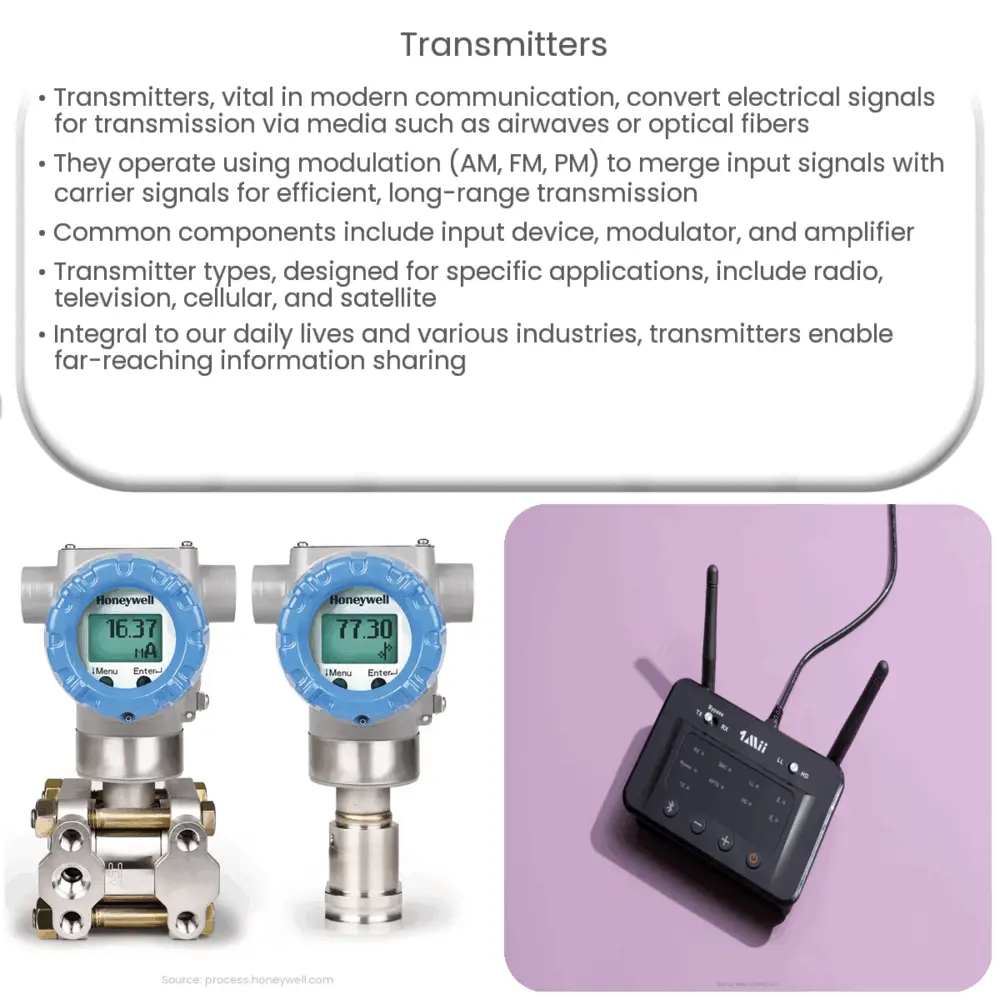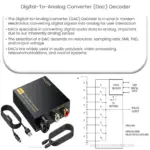Explore the intricacies of transmitters, their types, and their vital role in communication technology, from mobiles to satellites.

Understanding Transmitters
Transmitters are an essential part of modern communication technology. They convert electrical signals into a form that can be transmitted over various media, such as airwaves, optical fibers, or even through space. Transmitters can be found in a wide array of devices, from mobile phones to television broadcast stations.
Working Principles of Transmitters
A transmitter works by taking an input signal, which may be either analog or digital, and converting it into a format suitable for transmission. This usually involves a process known as modulation, where the input signal is combined with a carrier signal to create a new signal that can be efficiently transmitted over long distances.
- Amplitude Modulation (AM): Here, the strength (amplitude) of the carrier wave is varied in accordance with the input signal.
- Frequency Modulation (FM): In this case, the frequency of the carrier wave is altered based on the input signal.
- Phase Modulation (PM): The phase of the carrier signal is changed according to the input signal.
Each type of modulation has its own advantages and disadvantages, making them suitable for different applications. For example, FM is often used for high fidelity audio signals, such as those used in FM radio broadcasting, while AM is commonly used for transmitting voice signals over long distances, as in AM radio broadcasting.
Components of Transmitters
While the specific components of a transmitter can vary greatly depending on its application, most transmitters share some common elements.
- Input Device: This is the source of the signal to be transmitted. It could be a microphone for audio signals, a camera for video signals, or a computer for digital data.
- Modulator: This component takes the input signal and combines it with a carrier signal to produce a signal suitable for transmission.
- Amplifier: This boosts the power of the signal, ensuring that it can be transmitted over the necessary distance. The power of an amplifier is often denoted in Watts.
The signals produced by a transmitter can be propagated through various media, depending on the type of transmitter and the intended receivers. This is typically achieved through the use of an antenna, which radiates the signal into the surrounding environment.
Types of Transmitters
Transmitters come in a variety of forms to suit different applications.
- Radio Transmitters: These are used in radio broadcasting stations to transmit audio signals over long distances. They work by modulating an input signal onto a radio frequency carrier wave.
- Television Transmitters: These are used to broadcast television signals. They work in a similar way to radio transmitters, but need to transmit both audio and video signals.
- Cellular Transmitters: These are used in mobile communication systems. Each cell in a cellular network has a base station with a transmitter and receiver, allowing it to communicate with mobile devices in its area.
- Satellite Transmitters: These are used to send signals to and from satellites. They are capable of transmitting signals over vast distances, from Earth to space and back.
Transmitter Applications in the Real World
Transmitters have a wide range of applications in our everyday lives. They are an integral part of many technologies we often take for granted, from the mobile phones we use to stay connected, to the radio and television broadcasts that entertain and inform us.
In industry, transmitters are used for remote control and monitoring of systems and processes. They are also used in navigation and tracking systems, such as GPS, where they transmit signals to receivers which then calculate their position based on the timing of the signals received.
In science and research, transmitters are used to collect and transmit data from various types of sensors and instruments. For example, weather balloons often carry transmitters to send atmospheric data back to earth.
Conclusion
Transmitters play a crucial role in modern communication systems. They allow us to send and receive signals over vast distances, enabling a wide range of technologies that we use daily. From broadcasting entertainment and news to enabling mobile communication and scientific research, transmitters have truly revolutionized the way we share and receive information. As technology continues to evolve, so too will the capabilities of transmitters, opening up new possibilities for communication and data transmission.



